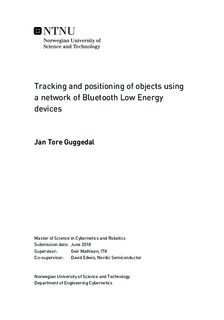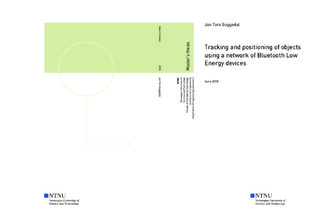| dc.description.abstract | This master thesis presents a fully functional indoor positioning platform that's been developed and tested and a a proposed positioning algorithm for use on data collected by the platform. The platform consists of Power over Ethernet (PoE) enabled \textit{anchor nodes} that have Bluetooth Low Energy (BLE) radio capability and Ethernet connectitivity, a PoE network switch and a computer for data processing. The nodes continuously scan for BLE advertisements from objects that are being tracked, called \textit{tags}. When such BLE advertisements are received, the nodes create scan reports containing RSSI value and metadata for the received packet. The report is sent to the computer via Ethernet for further processing. In the computer, the scan report is parsed and stored to a database. Optionally, the computer can also apply a positioning algorithm to the received data in real-time to position and track objects. Alternatively, it can fetch the data from the database and apply the algorithm at a later stage.
The positioning algorithm in this thesis uses multilateration using a user-defined number of nodes' data to estimate a tag's position. Distances from each node to the tags are estimated using RSSI values and log-distance path loss model with parameters that are found by experimentation and regression analysis. Kalman filter is applied to the inherently noisy RSSI values. After multilateration has estimated a position for the tag, a Kalman filter is applied to the position estimate.
The results show that 40% of the position estimates are within 1m of the true position and 85% are within 2.5 meters. Finding a position estimate for a tag is relatively fast, and it's shown that 5 algorithm iterations after the platform first discovered a tag, the position estimate can be only marginally improved by more iterations. One iteration is in this context equal to one BLE advertising interval. After the initial few iterations, the position is stable also for moving objects due to the Kalman filtering.
The thesis concludes that the developed indoor positioning platform is fully functional for tracking and positioning of BLE enabled devices, and suggests areas for improvement. It also finds the positioning algorithm adequate for indoor positioning, although the position estimate accuracy is not on par with the best comparable alternatives. | |

